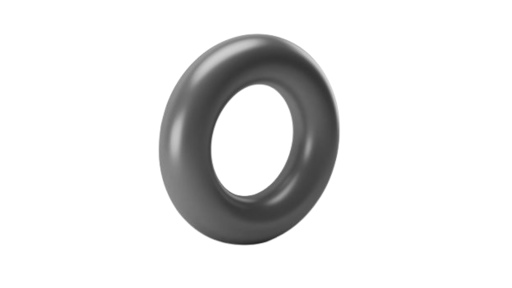These seal ring gaskets are silicone compounds that protect against electromagnetic interference and seal out the environment. Silicone O-rings are filled with silver, silver aluminum, or nickel graphite, all metal or metal-coated particles. Experienced O-ring cord suppliers can tell you which O-ring will work best for your application. O-ring cords, in particular, are very useful in the automotive, aerospace, industrial, medical, and military industries.
Here’s what you must know about the O Cords ring:
1. O-Ring Adhesive:
O-ring cords are made from EMI elastomers and solid cords. They are made to shield EMI and seal the environment for various industries. O-ring cords offer reliable protection against electromagnetic interference, radio frequency interference, environmental sealing, and electrical conductivity. Silicone O-ring cord ends are glued together by the people who make gaskets to make a tight seal. Cold bonding or vulcanization does this process of joining things together.
As with anything, each method has pros and cons, which we will discuss in more depth below.
2. Cold bonding:
Cold bonding does not use heat, as you might guess from the name. Instead, the glue that does not conduct electricity is put on the ends of the cords. Because compression molding is not used, customers who want these O-rings will have to wait less time. Since these rings are in large quantities, cold bonding also helps decrease the cost per part.
However, it is important to remember that during the O-ring splicing process if the O-ring is spliced wrong, the non-conductive adhesive will not work when the two ends are stuck together. To get the most out of these O-rings, which provide reliable shielding for most applications, they must be glued together by experienced gasket fabricators to ensure speed and accuracy.
3. Vulcanization:
The vulcanization process uses heat and conductive adhesives to join the ends of the cut lengths, making a single, solid O-ring from extrusions. After the glues are put on the ends, they are pressed together in a vulcanizing press or a hot mould.
These O-rings can also be as reliable as conductive shielding elastomers. This means that vulcanized O-ring cords are reliable and usually have the same strength as or more than the material, they are used with.
Vulcanized O-rings are reliable and consistent, but they should only be used in static, non-pressurized environments. However, compared to cold bonding, this process takes longer. It sometimes costs a little more because it uses techniques like compression molding. Ultimately, you must choose the O-ring glue and joining method that works best for your application.
4. Binding Agents:
O-ring cords are cheaper than molded O-rings, but they do not lose any performance. In addition, penetration can be stopped when a vulcanized O-ring uses an EMI bonding agent with the same property as the extruded cord.
This is why the O-ring cord should be glued together with silicone-based glues with EMI filler. Non-silicone glues that do not have EMI filler can make a weaker seal, which makes the application more likely to leak.
In addition, acrylics and other glues that do not use silicone tend to dry much harder than EMI silicone cord. The finished gasket often has a hard spot because the acrylic adhesives cannot handle the same temperature range as the EMI cord material. This makes them easy to break.
To avoid these problems and the risk of leaks, the vulcanized O-ring should use the same EMI bonding agent as the extruded cord. O-ring cord suppliers to ensure the highest standards are met should check the bond strength and elongation against the standard.


